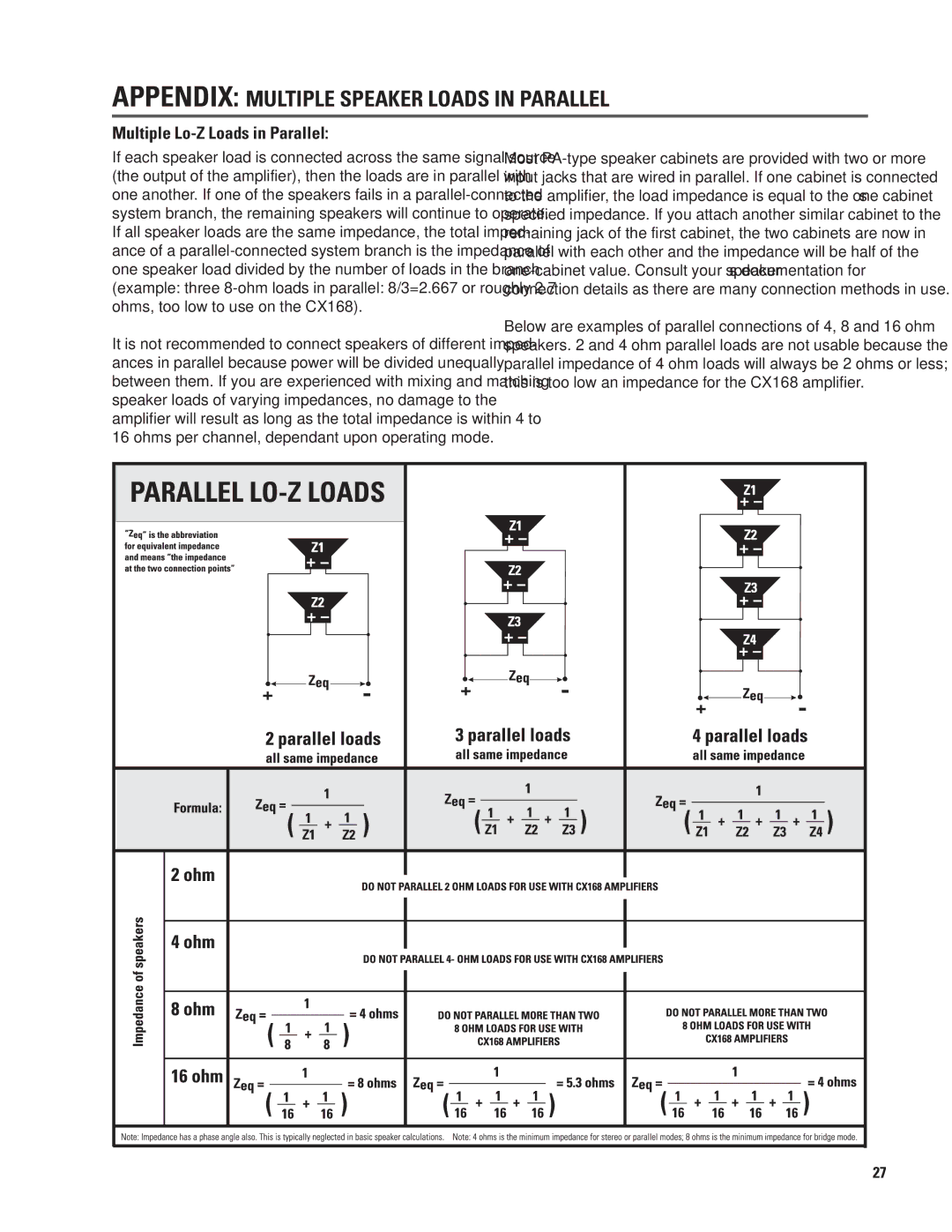
APPENDIX: MULTIPLE SPEAKER LOADS IN PARALLEL
Multiple Lo-Z Loads in Parallel:
If each speaker load is connected across the same signal source (the output of the amplifier), then the loads are in parallel with one another. If one of the speakers fails in a
It is not recommended to connect speakers of different imped- ances in parallel because power will be divided unequally between them. If you are experienced with mixing and matching speaker loads of varying impedances, no damage to the amplifier will result as long as the total impedance is within 4 to 16 ohms per channel, dependant upon operating mode.
Most
Below are examples of parallel connections of 4, 8 and 16 ohm speakers. 2 and 4 ohm parallel loads are not usable because the parallel impedance of 4 ohm loads will always be 2 ohms or less; this is too low an impedance for the CX168 amplifier.
27
